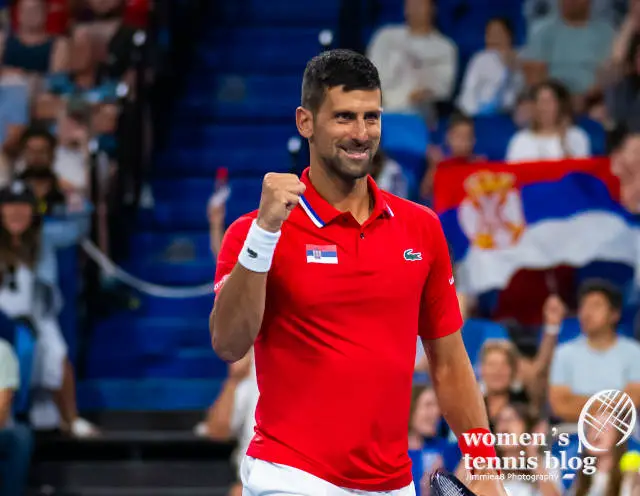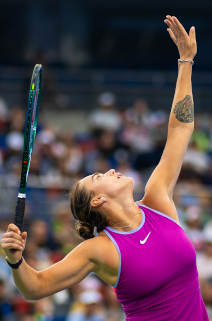Novak Djokovic is once again making headlines, not just for his achievements on the court, but for his pivotal role in spearheading change in the world of professional tennis. Through the Professional Tennis Players’ Association (PTPA), Djokovic is challenging the entrenched structures of the sport, bringing to light the frustrations that have long simmered within the player community.

Founded in 2019 by Djokovic and fellow pro Vasek Pospisil, the PTPA has mostly worked behind the scenes, offering services and benefits to players while laying the groundwork for a major shake-up. Now, it appears that the time for subtlety is over, and the organization is preparing to take legal action against the ATP and WTA that could fundamentally reshape the tennis world.
At the heart of the PTPA’s fight is a simple but powerful stance: tennis players, particularly those outside the top ranks, are overworked and underpaid compared to their peers in other global sports. As CEO Ahmad Nassar points out, despite tennis being the second-most watched sport globally, it ranks a distant ninth in terms of player earnings. The players’ association is determined to address this disparity.
One of the biggest targets on the PTPA’s radar is the non-competition clauses used by the ATP and WTA. These clauses limit players’ ability to participate in independent exhibitions and tournaments outside of the official tours, effectively restricting their earning potential. With high-profile events such as the Six Kings Slam in Saudi Arabia attracting attention, players are increasingly frustrated by the lack of freedom in choosing where and when to compete. Nassar suggests that such clauses could be legally challenged as restraint of trade, a move that could ignite a revolution within the sport.
The dissatisfaction among players is palpable. Stefanos Tsitsipas, Carlos Alcaraz, and Jack Draper have all voiced concerns over the relentless tennis schedule, which many believe is pushing athletes to their breaking point. Burnout among players has become an all-too-common theme. Caroline Garcia, France’s No. 1, recently shared an emotional message on social media, admitting that the pressure and exhaustion of the tour had become overwhelming. Garcia’s decision to end her season early was a stark reminder that the current system is unsustainable for many athletes.
Late-night matches, extended tournaments, and overlapping events have created a system that is not optimal for everyone involved. Nassar’s statement underscores the urgency: “The system is so biased against the players, as well as sub-optimal for fans and commercial partners.”
The Grand Slam tournaments, often seen as the pinnacle of tennis success, are also coming under scrutiny. While they offer substantial prize money, Nassar points out that only 14 to 16 percent of their annual income goes to the players, compared to around 50 percent in franchise sports like basketball in the United States. This disparity highlights the inequities faced by professional tennis players, who must endure grueling schedules, intense physical demands, and limited earnings opportunities.
Djokovic’s passion for this cause stems from his own experiences. He knows all too well the financial and physical challenges faced by players, especially those ranked outside the Top 100. Djokovic has openly criticized the tennis system for its failure to support these athletes, stating, “The 150th player on the planet struggles,” and emphasizing the high costs of participating in the sport.
Despite being in the twilight of his career, Djokovic’s dedication to the PTPA shows no signs of waning. He continues to fight for a future where tennis players are treated more fairly, with greater control over their careers and better financial support. As whispers of his potential retirement grow louder, Djokovic remains steadfast in his mission to leave the sport in a better place than he found it.
The PTPA is not just about fighting for immediate change; it’s about laying the groundwork for the future of tennis. Nassar envisions a long-term transformation, calling for a 10-year plan to revamp the sport. He draws parallels to the growth of the NBA, which transformed from an underdog league to a global powerhouse over the course of decades. “These things change,” Nassar says. “Tennis needs a revamp, and nobody seems to have an answer for where we are going next.” (sources: MSN, Essentially Sports)








The tennis season is far too long. I hope they are able to come to a compromise that allows countries around the world to host tournaments, but also protects the health of the players. It would be nice if they could find a way to shift the daily schedules, so that there is not much play during the middle of the day when it is hottest. That’s bad for the players and the fans. It is not uncommon for play to be stopped so that medical staff can attend to spectators who have been overcome by the heat. I would also like to see them rejigger the yearly schedule so that they are not playing at the hottest time of year. Formula 1 works in breaks during the year, so tennis should be able to manage it, too. I know that for me, by the time the US Open rolls around, I am losing interest. I really love watching tennis, but nine months of tennis is more than enough. It will be tough for them to make these types of changes, but I do think they are needed.